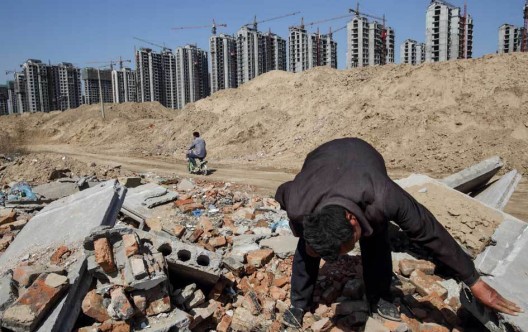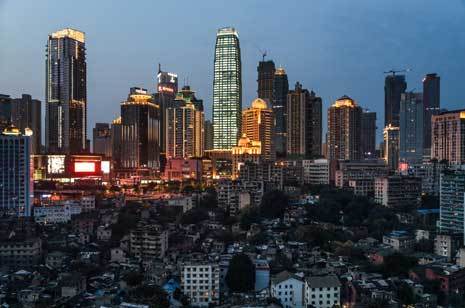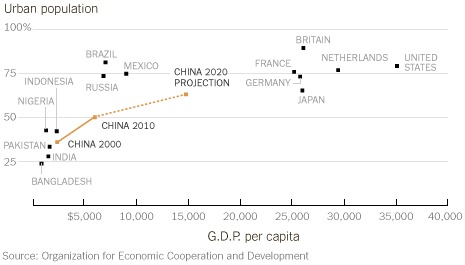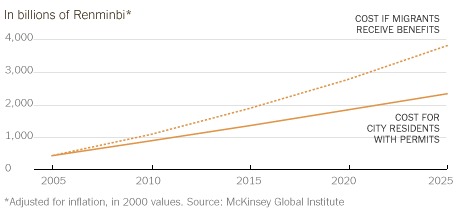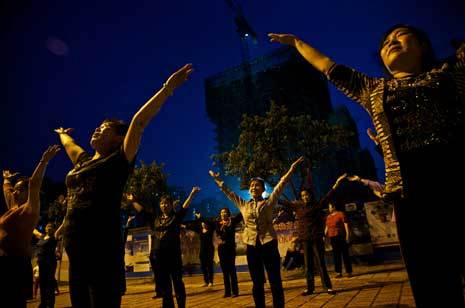Wednesday, June 26. 2013
Ant architecture
Following my previous post mentioning the printing of insects based food, could we also start to ask ants to design our own buildings?
Via Archinect
-----
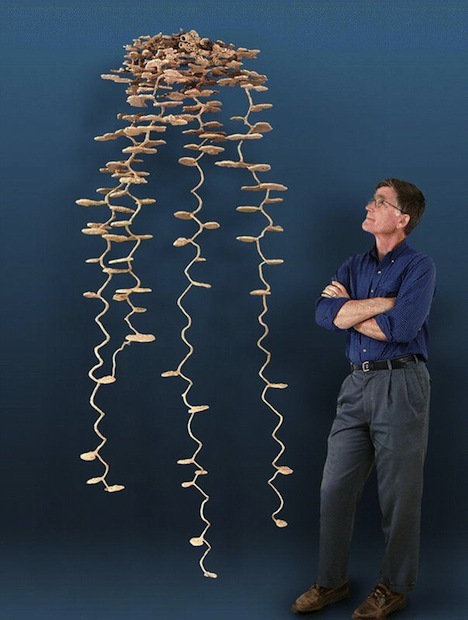
Personal comment:
Not a friendly way to map the ant's constructions, but quite fascinating resulting metallic structures nonetheless. Something in between a bioinspired design, an amorphous (alien) organisation and a structrured, repetitive architectural pattern.
The audacious plan to end hunger with 3-D printed food
Via Computed·Blg via Quartz
-----
Anjan Contractor’s 3D food printer might evoke visions of the “replicator” popularized in Star Trek, from which Captain Picard was constantly interrupting himself to order tea. And indeed Contractor’s company, Systems & Materials Research Corporation, just got a six month, $125,000 grant from NASA to create a prototype of his universal food synthesizer.
But Contractor, a mechanical engineer with a background in 3D printing, envisions a much more mundane—and ultimately more important—use for the technology. He sees a day when every kitchen has a 3D printer, and the earth’s 12 billion people feed themselves customized, nutritionally-appropriate meals synthesized one layer at a time, from cartridges of powder and oils they buy at the corner grocery store. Contractor’s vision would mean the end of food waste, because the powder his system will use is shelf-stable for up to 30 years, so that each cartridge, whether it contains sugars, complex carbohydrates, protein or some other basic building block, would be fully exhausted before being returned to the store.
Ubiquitous food synthesizers would also create new ways of producing the basic calories on which we all rely. Since a powder is a powder, the inputs could be anything that contain the right organic molecules. We already know that eating meat is environmentally unsustainable, so why not get all our protein from insects?
If eating something spat out by the same kind of 3D printers that are currently being used to make everything from jet engine parts to fine art doesn’t sound too appetizing, that’s only because you can currently afford the good stuff, says Contractor. That might not be the case once the world’s population reaches its peak size, probably sometime near the end of this century.
“I think, and many economists think, that current food systems can’t supply 12 billion people sufficiently,” says Contractor. “So we eventually have to change our perception of what we see as food.”
There will be pizza on Mars
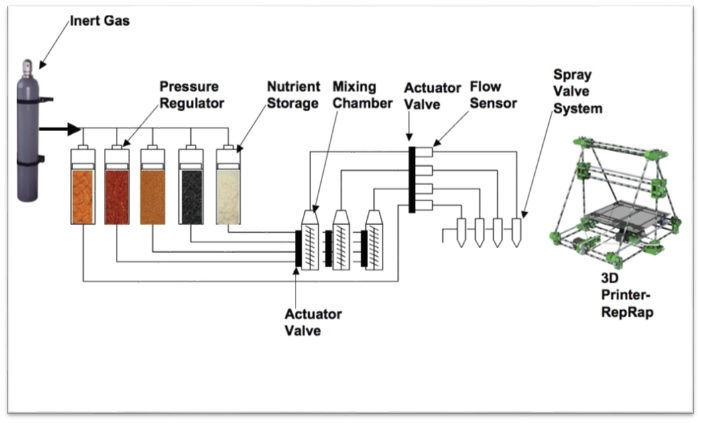
The ultimate in molecular gastronomy. (Schematic of SMRC’s 3D printer for food.)SMRC
If Contractor’s utopian-dystopian vision of the future of food ever comes to pass, it will be an argument for why space research isn’t a complete waste of money. His initial grant from NASA, under its Small Business Innovation Research program, is for a system that can print food for astronauts on very long space missions. For example, all the way to Mars.
“Long distance space travel requires 15-plus years of shelf life,” says Contractor. “The way we are working on it is, all the carbs, proteins and macro and micro nutrients are in powder form. We take moisture out, and in that form it will last maybe 30 years.”
Pizza is an obvious candidate for 3D printing because it can be printed in distinct layers, so it only requires the print head to extrude one substance at a time. Contractor’s “pizza printer” is still at the conceptual stage, and he will begin building it within two weeks. It works by first “printing” a layer of dough, which is baked at the same time it’s printed, by a heated plate at the bottom of the printer. Then it lays down a tomato base, “which is also stored in a powdered form, and then mixed with water and oil,” says Contractor.
Finally, the pizza is topped with the delicious-sounding “protein layer,” which could come from any source, including animals, milk or plants.
The prototype for Contractor’s pizza printer (captured in a video, above) which helped him earn a grant from NASA, was a simple chocolate printer. It’s not much to look at, nor is it the first of its kind, but at least it’s a proof of concept.
Replacing cookbooks with open-source recipes

SMRC’s prototype 3D food printer will be based on open-source hardware from the RepRap project.RepRap
Remember grandma’s treasure box of recipes written in pencil on yellowing note cards? In the future, we’ll all be able to trade recipes directly, as software. Each recipe will be a set of instructions that tells the printer which cartridge of powder to mix with which liquids, and at what rate and how it should be sprayed, one layer at time.
This will be possible because Contractor plans to keep the software portion of his 3D printer entirely open-source, so that anyone can look at its code, take it apart, understand it, and tweak recipes to fit. It would of course be possible for people to trade recipes even if this printer were proprietary—imagine something like an app store, but for recipes—but Contractor believes that by keeping his software open source, it will be even more likely that people will find creative uses for his hardware. His prototype 3D food printer also happens to be based on a piece of open-source hardware, the second-generation RepRap 3D printer.
“One of the major advantage of a 3D printer is that it provides personalized nutrition,” says Contractor. “If you’re male, female, someone is sick—they all have different dietary needs. If you can program your needs into a 3D printer, it can print exactly the nutrients that person requires.”
Replacing farms with sources of environmentally-appropriate calories

2032: Delicious Uncle Sam’s Meal Cubes are laser-sintered from granulated mealworms; part of this healthy breakfast.TNO Research
Contractor is agnostic about the source of the food-based powders his system uses. One vision of how 3D printing could make it possible to turn just about any food-like starting material into an edible meal was outlined by TNO Research, the think tank of TNO, a Dutch holding company that owns a number of technology firms.
In TNO’s vision of a future of 3D printed meals, “alternative ingredients” for food include:
- algae
- duckweed
- grass
- lupine seeds
- beet leafs
- insects
From astronauts to emerging markets
While Contractor and his team are initially focusing on applications for long-distance space travel, his eventual goal is to turn his system for 3D printing food into a design that can be licensed to someone who wants to turn it into a business. His company has been “quite successful in doing that in the past,” and has created both a gadget that uses microwaves to evaluate the structural integrity of aircraft panels and a kind of metal screw that coats itself with protective sealant once it’s drilled into a sheet of metal.
Since Contractor’s 3D food printer doesn’t even exist in prototype form, it’s too early to address questions of cost or the healthiness (or not) of the food it produces. But let’s hope the algae and cricket pizza turns out to be tastier than it sounds.
Related Links:
Personal comment:
It looks like cats and dogs are already eating "rapid prototyped" food --from what I see on the pictures here-- and are a step forward in the future from us! ;)
But would it be given to AdriÓ Ferran, it could start to look and taste like something!
But we could also put this in perspective with the recommendation from UN (Food & Agriculture) that humanity should eat more insects in the future, both because it needs less energy and produces less carbon dioxide to produce 1kg of insects (2kg of food produce 1 kg of insects while 20kg produce 1kg of meat...) and because they provide good and healthy nutriments. As many people still don't like to eat insects due to their aspect, turn them into powder and print them might be an interesting way.
Tuesday, June 25. 2013
China Plans to Move 250 Million into Cities by 2025
Via ArchDaily via The New York Times
-----
Li Rui, 60, scavenging his former village for building materials in Liaocheng. © Justin Jin for The New York Times
The old buildings under these high-rises in Chongqing have been marked for demolition. © Justin Jin for The New York Times
The Chinese government is pushing forward with a plan that will move 250 million Chinese people from rural communities into newly constructed towns and cities over the next 12 years. The government has been bulldozing ancient villages, temples and open-air theaters as well as paving over farmland to make way for mega-cities that will raise the number of city-dwellers in China to nearly the total urban population of the US.
For decades, the Chinese Communist Party insisted that peasants, even those working in cities, be tied to plots of land in order to ensure political and economic stability. Today, however, with the threat of a slowing economy, the party has reversed its stance, hoping to find new sources of national growth. China is looking for a way to restructure its economy, to become more independent, and rely less of exportation.
Their solution: domestic consumerism.
Urbanization and Level of Income. Courtesy of The New York Times
Those who live in rural communities in China are largely self-sufficient, living off of the land and requiring very little in terms of infrastructure and transportation. By pushing for rapid urbanization and a radical shift from production to consumption, the government believes that there will be countless new opportunities for construction companies, transportation, utilities and appliance makers. “If half of China’s population starts consuming, growth is inevitable,” said Li Xiangyang, vice director of the Institute of World Economics and Politics, part of a government research institute. “Right now they are living in rural areas where they do not consume.”
But this extreme approach to urbanization and modernization can be a dangerous one. In countries such as Brazil and Mexico, where urbanization was also seen as the vehicle for economic growth, slums expanded and unemployment clung to the newly relocated underclass. If China wants to succeed in its endeavor, it will need funds sufficient for the construction of new roads, hospitals, schools and community centers – which alone could cost more than $600 billion a year – as well as provide for education, health care and the pensions of ex-farmers. They will have to coordinate intensely among various ministries and somehow balance the rights of those dislocated by their policies.
Some of the people moved from their farmland to a housing project in Chongqing dance outdoors, the sort of recreation they never had time for as farmers. © Justin Jin for The New York Times
At his inaugural news conference, the country’s new prime minister, Li Keqiang, cautioned that it would require quite a few legal changes “to overcome various problems in the course of urbanization.” These could include chronic urban unemployment if jobs are unavailable, more protests from uncooperative farmers, a permanent underclass in big Chinese cities and the destruction of rural culture and religion – not to mention the obliteration (already taking place) of the traditional, organic Chinese city.
The day after Chinese architect Wang Shu received the Pritzker Prize in May of 2012, he returned to the old Beijing neighborhood where he had grown up only to find it in the process of being demolished. This neighborhood – called a “hutong” – was a maze of narrow streets and traditional courtyard houses that once characterized the urban fabric of a Chinese city; now, however, they are rapidly transforming into sprawling, gridded mega-cities of identical skyscrapers – copy-cats of many modern cities in the West.
“Cities today have become far too large,” Wang said in an interview in April. “I’m really worried, because it’s happening too fast and we have already lost so much.”
While China’s intense urbanization has caused irreversible destruction to much of the country’s rich architectural and urban past, it has also created and continues to create countless opportunities for innovative design. With so many plans and projects waiting to be developed, it’s only natural that China is becoming more and more fascinating to the architecture world. But what price must be paid, what sacrifices made by 250 million lives for the China of the future?
Tell us your thoughts below, and for the original story, check out this excellent New York Times article.
References: NYTimes, Bloomberg
Personal comment:
Hmmm? Consumerism?
I believe we've already tried that one, don't we?
Monday, June 03. 2013
# LIBERTY SQUARE /// Occupy Gezi: The Reason why Politicians are so Afraid of the Bodies
Note: interesting post by Léopold Lambert about body, presence and activism, as a tribute to all "occupy" movements of parks, streets, squares, etc. and in particular the recent ones in Turkey: body presence in public physical spheres completed by social media communication.
Via The Funambulist
-----
de Léopold Lambert

A Body of Gezi Park. 31 May 2013. From Yücel Tunca via Nar Photos.
For the last five days, the small park of Gezi near Taksim square in Istanbul has been occupied by dozens of thousands of people protesting, at first, against the urban project in development for this site that involves a shopping mall. Such a project that transforms a public space into an instrument of capitalism is part of a long series of others that has been changing Istanbul’s urban landscape and politics in the last decade. Very quickly however, the protest generalized itself and reached other cities of Turkey (Ankara, Izmir and more) in an attempt to globally constitute a strong resistance against the conservative and religious Turkish government and its Prime Minister, Recep Tayyip Erdoğan. The latter used to be Istanbul’s mayor and still has strong interests in its development. The police violently attacked the protesters, injuring severely some of them, but reinforcing the movement’s determination and legitimacy.
It is interesting to observe that such a news has been spread out much rapidly on the international level than on the national one since the Turkish Press – just like the American one, including the New York Times, at the beginning of the Occupy movement – did not communicate about this information in a clear submission to the political status quo. In New York, hundreds of occupiers went back on Zucchotti Park to show their international solidarity with the Turkish movement of the same name.
For the last two years, many “professional politicians” in power learned what it is to be afraid of the multitude. All answered with brutality (from Cairo to Santiago, via Benghazi, Damascus, Athens, Montreal, New York and many more), some stepped down, some kept their status, some others are still ordering massacres against their own people but all of them seems to have feared the power of the crowds, gathered by their common will to resist against totalitarianism and capitalism. Something needs to be understood here: despite all the media attempts to “surf” on these political waves with a common approach of the use of social media as a new form of political act – to a certain extent, it is not completely wrong – the thing that veritably choked the status quo is the gathering of bodies in the public space. Of course, some gathering of bodies are less political than others – sport events related ones for example – and therefore, there needs to be a certain performativity involved in this process; however, there is something inherently political in this act of forming a group of bodies in the public realms. As I have been writing often, especially to exclaim the sense of this notion of occupying, our body can only be at one place at a time and, because of its materiality, no other body can be at the very same place at the same time. This involves a certain necessity as our body is always spatialized but, at the very same time, it also involves the radical choice for this space at the exclusion of every other in the world. At each moment of our life, we have therefore to re-accomplish the necessary yet radical choice of the localization of our body. When thousands of bodies choose to be localized together in the streets or on a square, in such a way that they are not participating to the economy and might even have to confront the physical violent encounter with the various forces of suppression, rather than choosing the comfort of the private realms, a strong political gesture is being created.
It would be too easy to necessarily applaud any political gesture of this kind. The recent numerous demonstrations of catholic extremists and other movement of right wing activists in France against the legislation authorizing gay marriage – now in vigor - prove it well. In this latter case, the bodies that were demonstrating were the bodies representing the norm: white Christians heterosexuals. The latter do not really suffer from the way society is organized as they constitute the bodies that society considers to organize itself. The streets of Istanbul, on the other hand, are filled by people whose bodies are getting more and more constrained by the conservative religious dominant ideology – by dominant, I don’t imply as much a question of majority than one of relationships of power.
As always, architecture is not innocent here. The fact is that these bodies are gathering in the public realms, but more precisely, outside, in the streets, on the squares, in the parks. Architecture through its internality always has a limitation of the amount of bodies it can host (the maximum occupancy as the urban code defines it); the outdoor world does not really. Choosing for our body to be outside is to potentially contribute to a crowd that theoretically won’t be limited in its number by physical borders, hence the fear of politicians to see the movement spreading. Architecture is inherently participating to the striation of space, nevertheless, it can attempt to create a substantial porosity between the space it contains and the public one that surrounds it, in such a way that the political bodies can appropriate it.
For an excellent reflective digest about Occupy Gezi and these last five days in Istanbul, read this article on Jadaliyya.
fabric | rblg
This blog is the survey website of fabric | ch - studio for architecture, interaction and research.
We curate and reblog articles, researches, writings, exhibitions and projects that we notice and find interesting during our everyday practice and readings.
Most articles concern the intertwined fields of architecture, territory, art, interaction design, thinking and science. From time to time, we also publish documentation about our own work and research, immersed among these related resources and inspirations.
This website is used by fabric | ch as archive, references and resources. It is shared with all those interested in the same topics as we are, in the hope that they will also find valuable references and content in it.
